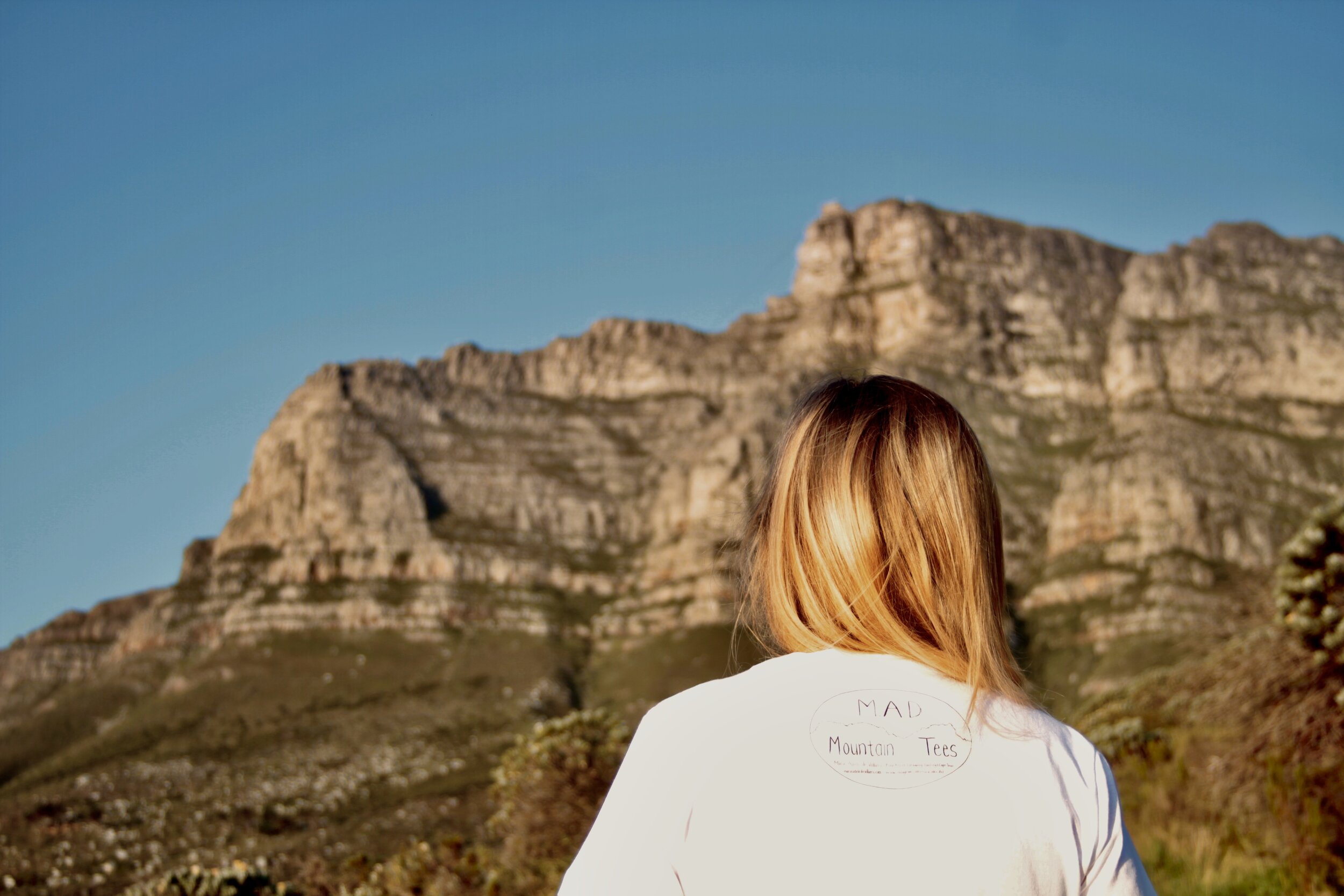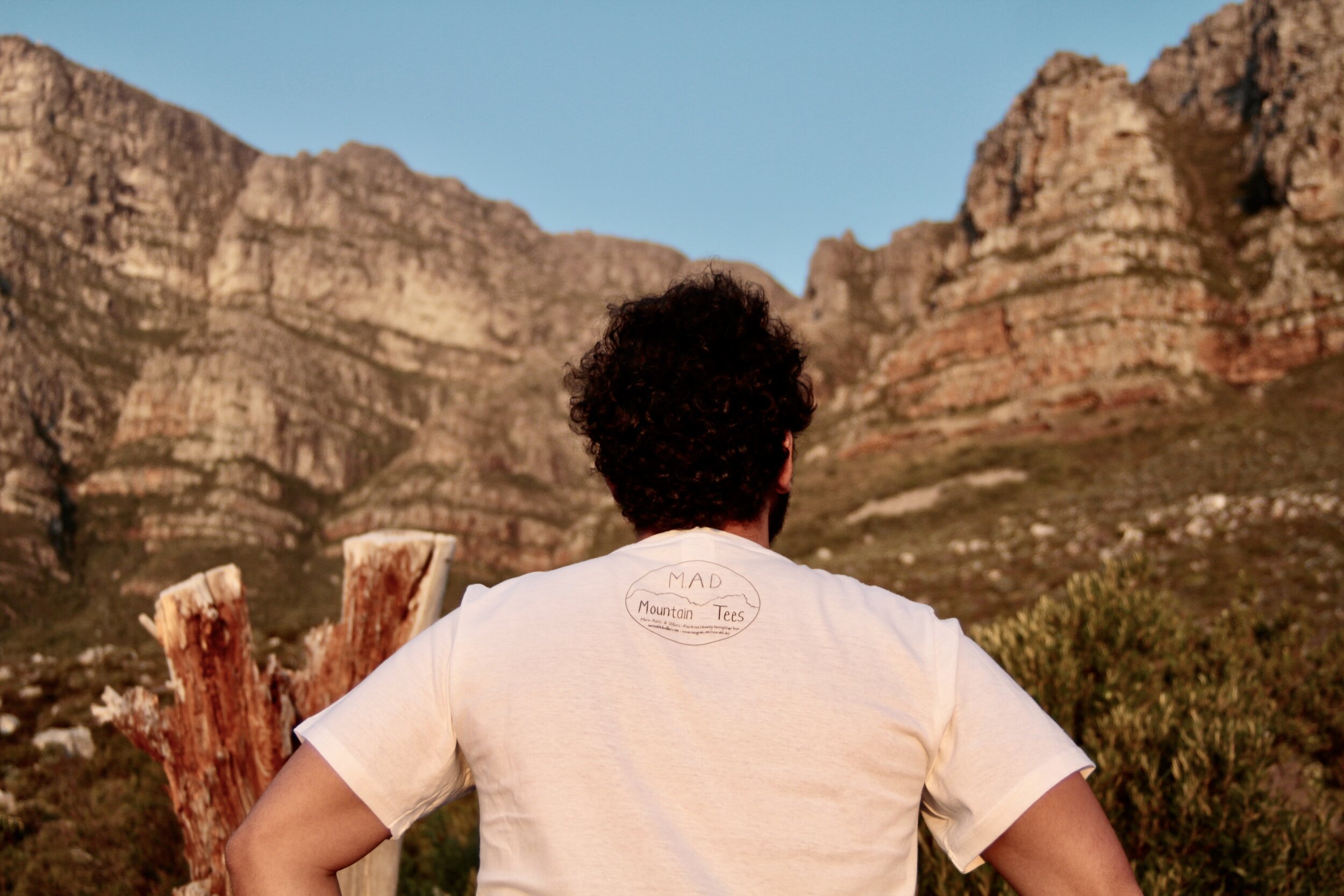
One mountain artwork, many reproductions. This means affordability, and that more people can appreciate one artwork in many forms.
Limited Edition Archival Prints
A limited number of archival quality fine art prints made from selected ink mountain drawings, printed on Felix Schoeler True Rag Etching Paper. All prints come unframed. Bring the mountain home! Select the order now button and let me know your desired mountain, size and number of prints.
M.A.D Mountain Cards
Each pack is inclusive of 5 cards, each a print of one of my following ink line mountain drawings from my A Mountain In A Day series: 08.03.2018 - Drakensberg, 27.03.2018 - Table Mountain, 16.05.2018 - Stellenbosch Mountain, 07.09.2018 - Simonsberg, 16.10.2018 - Jonkershoek, as well as 5 envelopes.
R250 per pack of 5 cards & 5 envelopes
M.A.D Mountain Totes
R200 per bag
M.A.D Mountain Tees
R250 per tee - ladies tee available in S, M & L (sizes are on the smaller side)
R250 per tee - mens tee available in M & L (sizes are on the larger side)

































